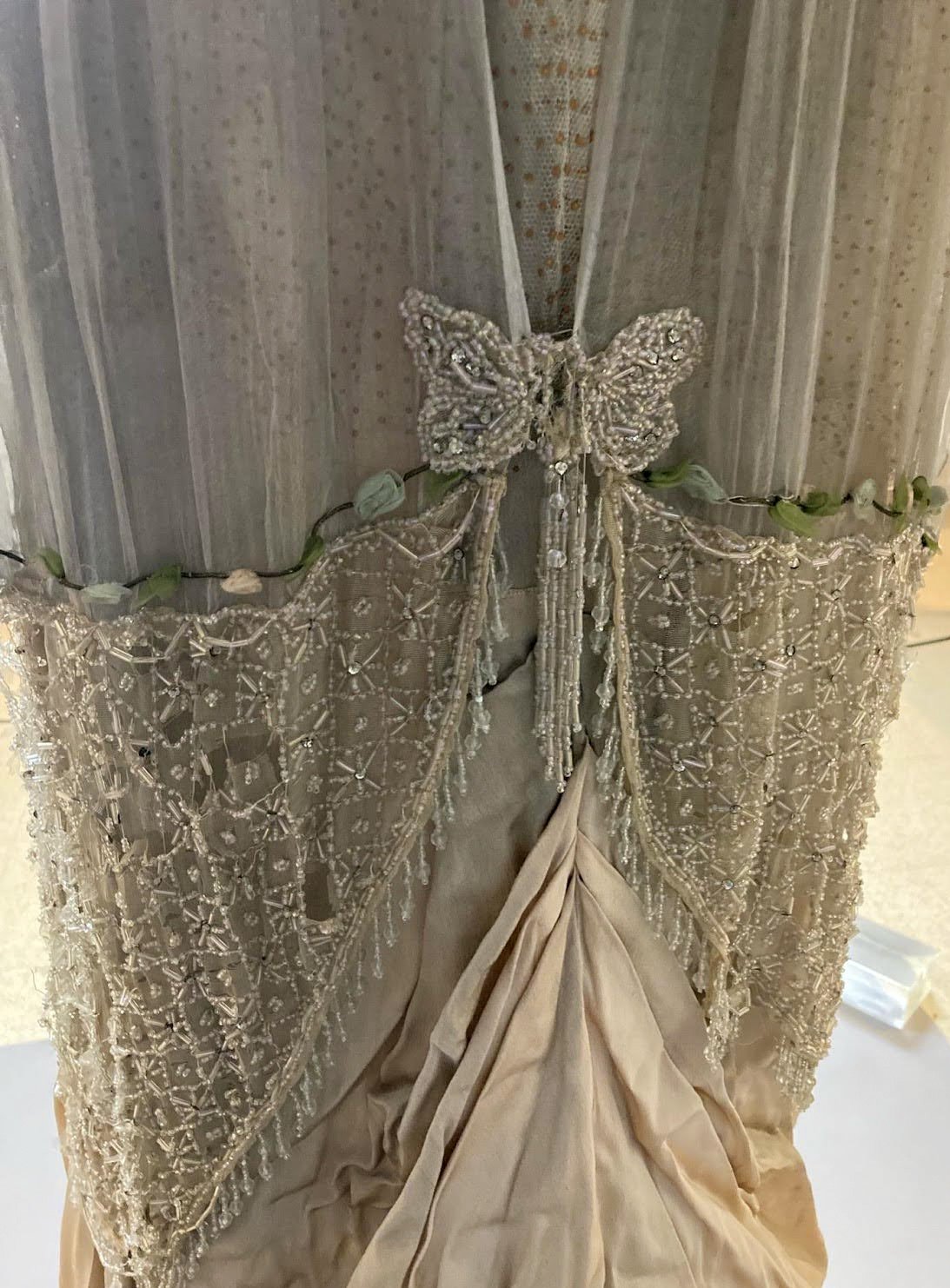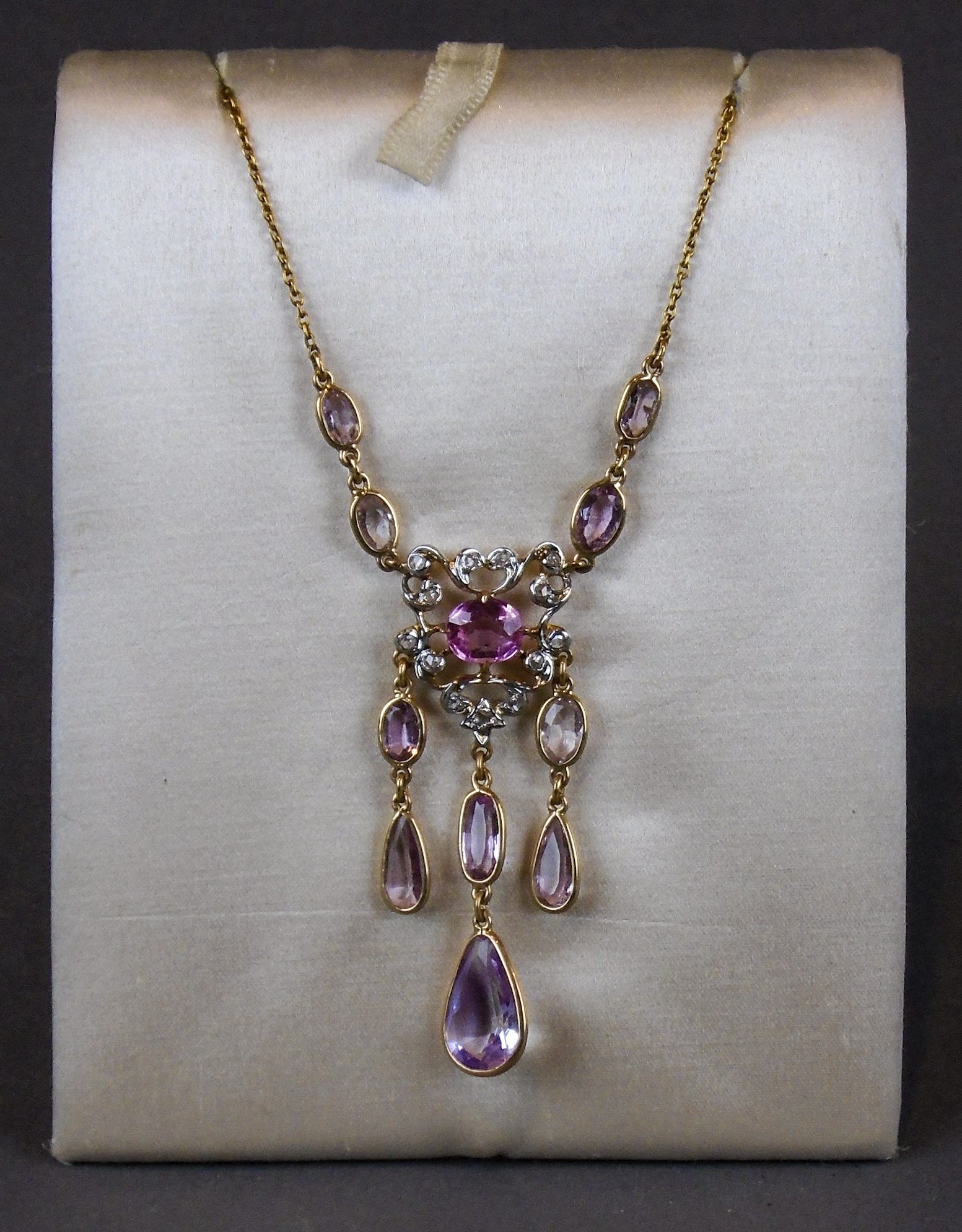April Object of the Month: Annette’s Chiffon Ball Gown
Fashion at the turn of the twentieth century was influenced by the introduction of the s-bend corset, which created a soft, feminine outline. Evening gowns often had small, drooping sleeves, with sashes and beading for embellishment. This gown was designed in 1912 during the Progressive Era preceding the First World War when popular styles included flowing trained skirts, ruffles, and lace.
Made by a dressmaker in New York City named Madame La Jotte, this pink chiffon evening gown in the Locust Grove collection was worn by Annette Young to her brother Innis Young’s Junior Promenade at Harvard in February of 1913 and emphasizes the elegant high-waisted silhouette of the period. The Junior Promenade, or “Prom” as it would come to be known, was a popular form of entertainment for young people and included music, dancing, an elaborate program, and refreshments.
To accompany the dress’s short sleeves, Annette would have worn elbow-length gloves to complete her ensemble. A period photograph of Annette wearing the gown shows the young woman posing in the Dining Room at Locust Gove, wearing gloves and an ornate hairpiece and holding a fan. She also wears a jeweled necklace which remains in the collection.
Like Annette’s, many dresses from the 1910s consisted of two layers – the first was an underdress, which was generally slim. This bottom layer was accompanied by a more decorative and slightly fuller tunic overskirt layered on top. In Annette’s gown, the narrow satin underdress serves as the exquisite backdrop for the intricate beading and appliques of bows and flowers that border the bottom. The immaculate detail of the beaded butterfly hovering at the top of the cascading break in the fabric is particularly notable.




